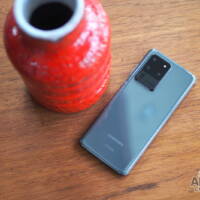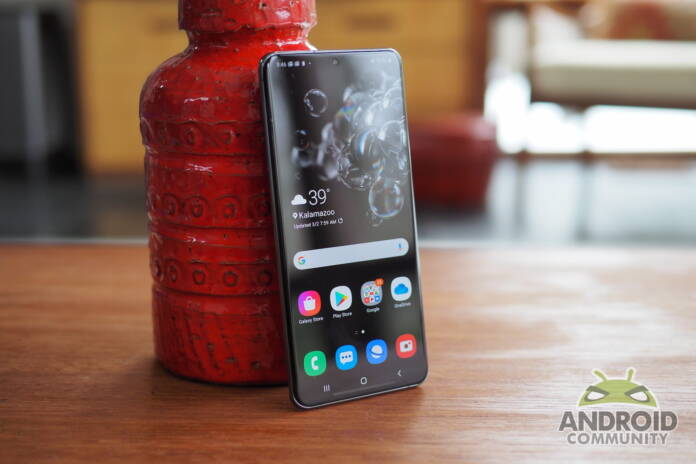
Before we get in an elaborate description of what the Samsung Galaxy S20 Ultra 5G is all about, let us dip into the persona of this ultimate beast. With an incredible 120Hz display and a huge battery, the Samsung Galaxy S20 Ultra is one helluva an expensive device. With the ticket size touching almost $1400, you are compelled to contemplate that trip to Hawaii, which you have been putting off for ages.
Agreed, the 10x lossless zoom is great and the performance on this phone is one of Samsung’s best, but it can’t take away the camera focus issues and that the 100x Space Zoom feature is more for its name than its performance. For a minute, let’s put aside the pricing factor and focus on what Samsung brings to the table with this device.
We have a top-of-the-line Samsung 2020 phone, which also happens to outshine the other Galaxy S20s thanks to its ‘excessive camera’ and a humongous screen real estate. Complementing this is a large, powerful battery, along with other impressive features, and a few kinks that it could do without.
Design Philosophy and Hardware
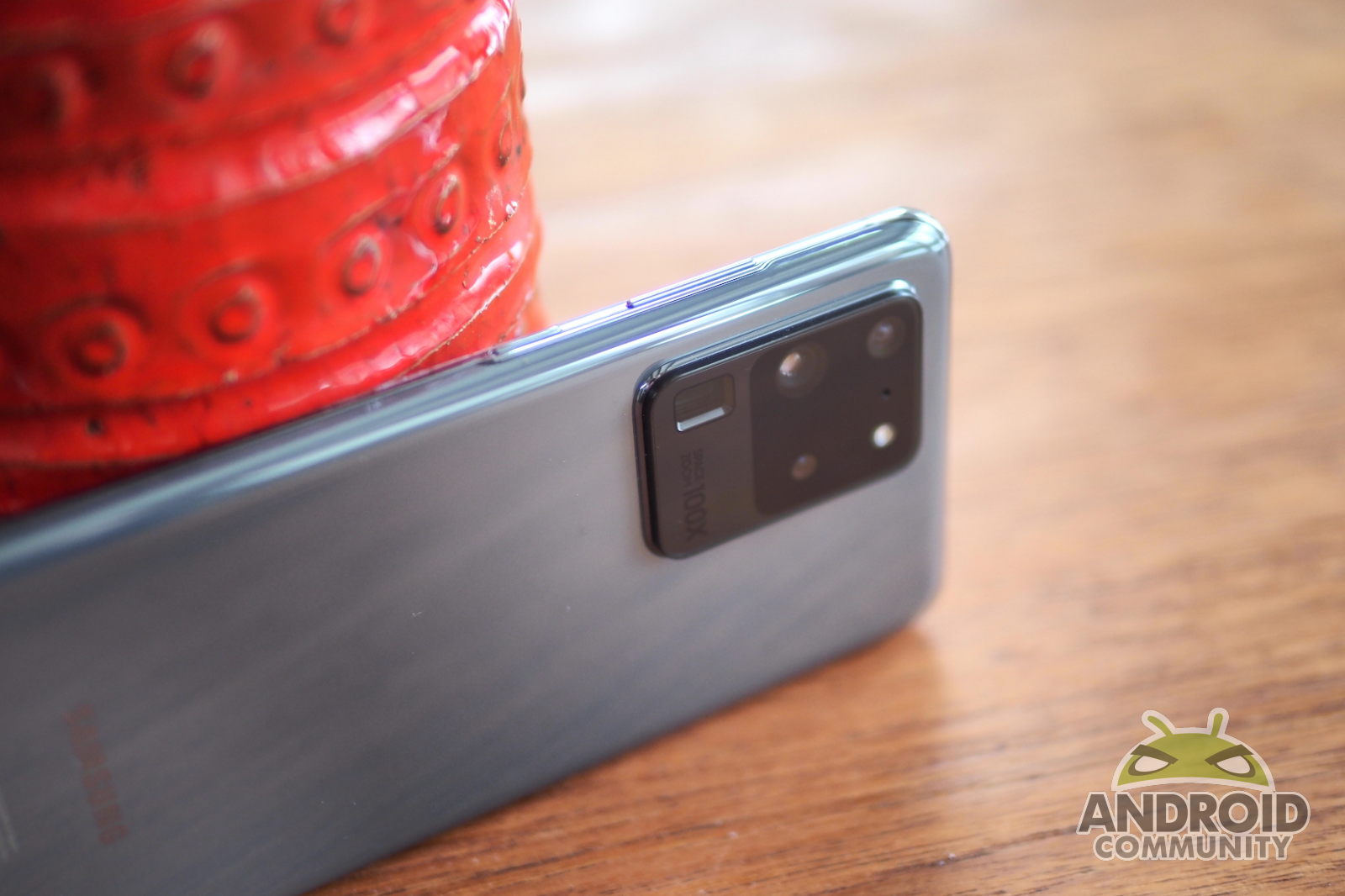
If you believe that size matters, then the Galaxy S20 Ultra checks the box and its 76 x 166.9 x 8.8 mm size is ample in your hand. Weighing about 220 grams, the size is defined by the extended length, thickness, and weight, when you compare it to the Galaxy Note 10+. We are on the fence about how wide phones should be, but if you’re the kind who doesn’t mind using two hands to operate a phone comfortably, then who are we to complain.
Ideally, one-hand-operation is the best, but at the risk of dropping your brand new Galaxy S20 Ultra, we recommend using both – one for holding the phone, and the other for accessing it. It’s quite possible that the Galaxy S20 Ultra is aimed at the sophisticated, money-bags generation, which is why there is only the color options available are black and grey. On the face of it, we find the Gorilla Glass 6 held together by a metal frame, which in turn houses a USB-C port on the bottom, along with speaker holes.

Under the beautifully designed sits a 5,000 mAh battery, which powers all the functions. However, Samsung has decided to ditch the 3.5mm headphone jack, which means you will need to invest in something befitting the like the new Galaxy Buds+ earbuds. Qi wireless charging, Wireless PowerShare, and IP68 waterproofing have in many ways become the standard norm, and hence expected here as well.
Display and Performance
It is no new news that Samsung knows how to delight its customers with the most comprehensive displays for its phone. Gone are the days when tacky iPhone-wannabes flooded the market. Samsung has raised its bar with great phone displays and, with the Galaxy S20 Ultra, we are treated to a 6.9-inch Dynamic AMOLED Infinity-O display. Incidentally, it’s the biggest display we have seen from Samsung.
You will be quick to notice the richness of the colors and the crisp contrast and brightness details. Its HDR10+ certification can be credited to its 3200 x 1440 Quad HD+ resolution and when we tested a black backdrop, the pitch darkness made us feel what a dip in the Black Hole can feel like.
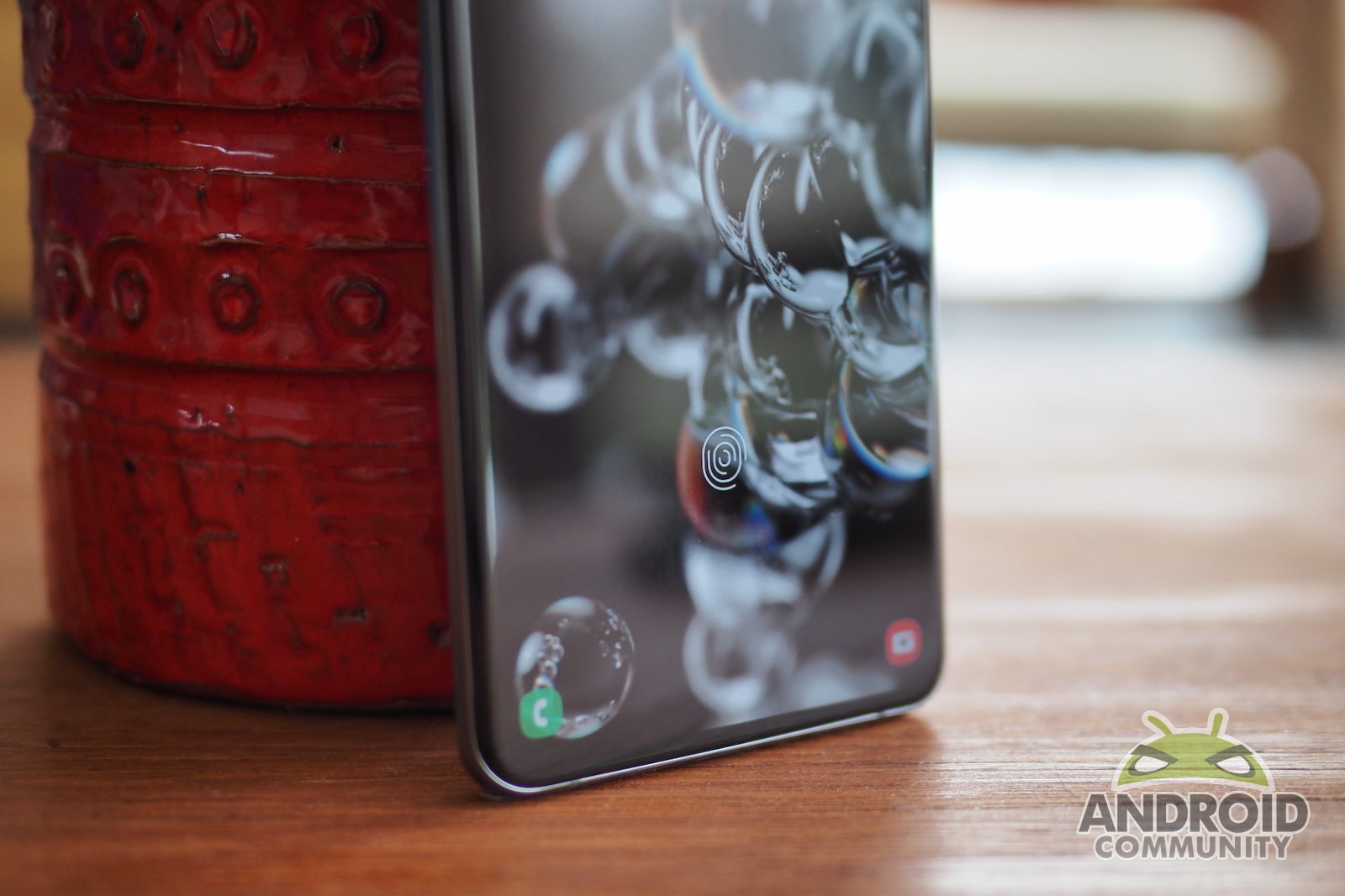
The selfie camera resides plumb in the top-center of the AMOLED screen and is very discreet. To counterbalance the aesthetics, the in-display fingerprint sensor resides in the lower portion of the screen, which comes to life then you try to access the phone. Unfortunately, Samsung still uses the same ultrasonic technology as before, which is not super-fast. In our experience, the relatively small area where you have to press your finger is small and thus frustrating as it takes time for the device to recognize your prints.
Taking pride in its 120Hz refresh rate, a brand-new unit is set to 60Hz. The logic behind the setting is to enjoy the maximum display resolution, which is not possible with 120Hz; you will need to set it to FHD+ instead. The point being, it’s not a variable-rate refresh; the phone doesn’t adjust the rate based on what’s on-screen.
The selling point is that Android 10 on a 120Hz panel is very enticing, which also means that the overall experience of the display is very smooth and seamless. When we tested the phone, we could not differentiate between FHD+ and the phone’s maximum resolution, especially in daily use. The S20 Ultra scores well in terms of smooth scrolling, responsiveness of the faster refresh, and lag-free zooming.

The phone we have reviewed is fitted with Qualcomm’s latest Snapdragon 865 chipset, and this will be the norm for some areas like the US. The other markets will retail the S20 Ultra powered with an Exynos 990 – Samsung’s own creation. Sporting a microSD slot, the phone offers the following options: either 12GB or 16GB of RAM, plus 128GB, 256GB, or 512GB of internal storage.
Heavy app users will be pleased to know that Samsung has catered to your requirements; few of the apps can be stored apps into the memory. This means Android 10 will not shut them down if they are in the background. The fact remains that some of Samsung’s customizations under the realm of One UI 2, may not work for everyone.
For example, the notifications have been repositioned and the controls do a decent job of getting the essentials within thumb-reach; even the widgets are handy. Encouraging video calls is merging in of Google Duo into the contacts app and native dialer. Not sure if this is a plus point, but definitely creative. The Quick Settings has many options available and Samsung Daily, which is accessed by a swipe to the left of the home screen, is a mix of partner content and Samsung’s own goodies.

Camera that delights and frustrates
Let us explain, Samsung says that a firmware update is coming, which will impact the performance of the camera. Translating that to lay terms, it means, for now, we have a camera that can take beautiful images, but the functionality is slightly compromised at the moment. Assuming you are the kind who wants to just point-and-shoot, then you may be okay with results where saturation is slightly higher than the other phones and images that are sharper than the norm.

When you turn on the HDR mode, the above results get accentuated and make you wish that Samsung would revert to standard image results. What is confusing is that the sensor used in the camera is really good, but, for some odd reason, the unnatural tones don’t compliment the photography outcome expected. For example, the skin tone can be way off the mark.
The primary camera has a comparatively narrow focal length and the portrait mode adds the expected background blur to make the subject stand out. The depth in an image that the camera captures is very appealing but the ‘crispness around the edges’ is missing. If Samsung’s software update manages to bring about the promised changes, then it will be a good thing.

Specs for the camera include a 108-megapixel main sensor with PDAF, optical image stabilization, and an f/1.8 lens. These specs come with a 120-degree ultra-wide camera, and a 12-megapixel sensor and f/2.2 lens. An LED flash and a DepthVision time-of-flight sensor complete the package.
Below this sensor, you will find the telephoto camera, which uses a 48-megapixel sensor with PDAF and OIS, and an f/3.5 lens. This camera gives us 4x optical zoom, however, the sweet spot is the 10x lossless zoom for 12-megapixel photos. All three of the primary cameras are a bit complex, but the big takeaway is that we can capture 108-megapixel stills with the main camera. Samsung’s camera app will let you know if the picture warrants it.

The ‘Nona Binning’ technology gives us the 12-megapixel photos and the results are better than the Quad-Bayer 48-megapixel shots. Nona Binning basically combines the data from clusters of nine pixels into a single pixel in the final frame. It translates to better low-light performance. Essentially, the Galaxy S20 Ultra automatically identifies the kind of pictures it is taking and of course the conditions, and the phone adjusts the settings accordingly.
The shallow DoF is an area where the Galaxy S20 Ultra battles with and the Autofocus can be a little icky situation, especially when the phone wavers a little as it tries to lock on. In our experience, the close-ups are not as great as we have found on other phones that deal with macro images. The story is different for distant shots thanks to Samsung’s big telephoto capabilities.
In our opinion, the results of 10-15x are far more promising than ‘Space Zoom’ or 100x magnification. Samsung has a Night mode and the app automatically suggests that you switch to it when the lighting conditions seem low. The ideal is 5-10 second exposures, however, be careful to have steady hands while taking the picture. Interestingly, the regular camera mode for low lighting fetches us better results in comparison.
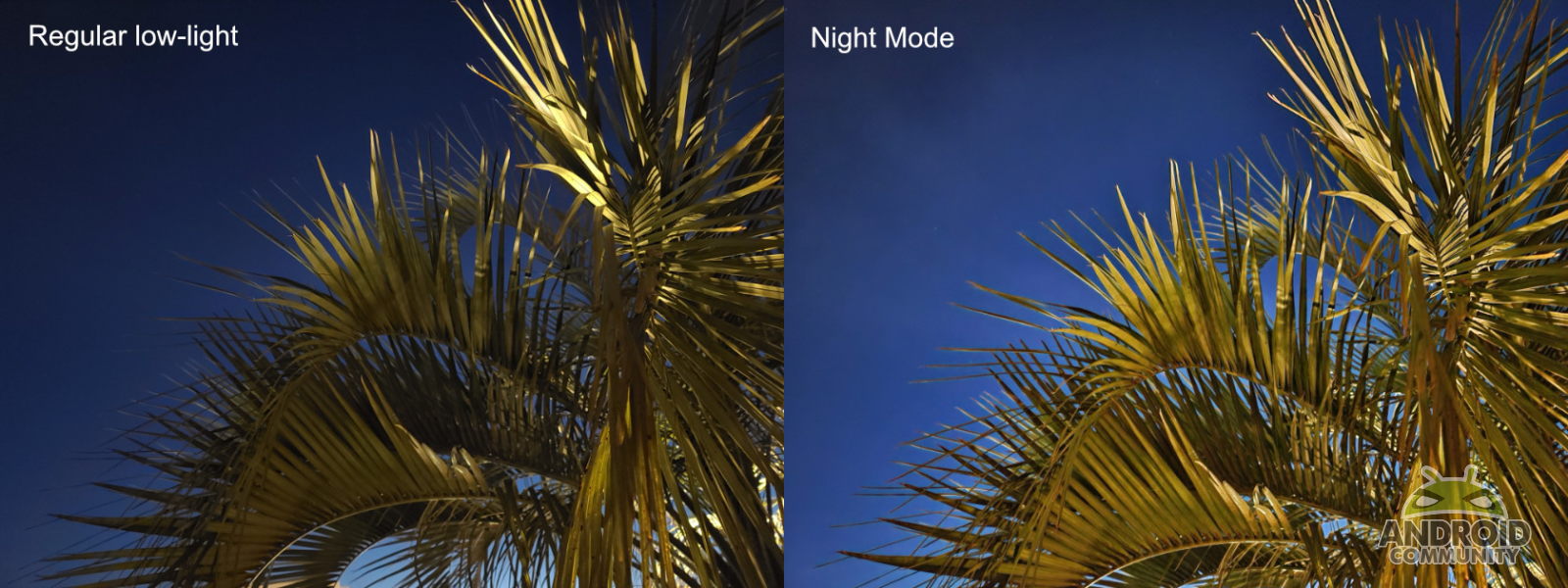
The phone also features a Single Take mode, which basically is a separate camera mode that takes almost all of the creative decisions for you. Simply hit the button and wave the Galaxy S20 Ultra for up to ten seconds. It will take a video automatically and then extract photos from there. The cool app recommends you try different angles or take tighter shots, and that’s the extent of what is required of you. As soon as it’s done taking the video, the Single Take mode spits-out a bunch of stills and clips. Apart from the original video, you are privy to a bunch of excerpts that have quirks like being looped or speed-changed, filtered images, and other auto-edits. Basically, your Phone’s AI does the heavy lifting for you and gives you creative masterpieces to show off as your own.
The specs include 8K video recording with 24fps capture, with a cap on the clips being at 5 minutes. And with 600MB per minute, the files with use up your storage very quickly. The point we want you to remember is that 8K videos or UHD or Full HD 60fps don’t support tracking autofocus or video effects. And if you opt for 8K then you can’t access the HDR10+ mode.
The silver lining in the Galaxy S20 Ultra’s 8K capture is the process of parallelly snapping a 33-megapixel still. We all know that the photos taken while you’re recording video are not quality images and extremely low-resolution, However, S20 Ultra gets it right and the results are fantastic.
Battery
We have always maintained that although devices claim certain prowess and power with their batteries, the reality is that the functionality differs from person to person, as it’s based on individual choices of settings. Although, in the S20 Ultra’s case, the expectations from a 5,000 mAh battery are high.

While tempting us with a 120Hz screen, the reality is that it drains the power quite a bit. If you go trigger-happy and shoot plenty of 8K videos, and use 5G networks at the same time, then you are setting the battery up for easy draining. Our recommendation is to stick to the 60Hz, which will balance out the strain on the battery.
Topping up the drained battery is a breeze with the fast charging – 45W USB-C PD support. Although Samsung doesn’t include it in the box, you can use the bundled 25W charger, which isn’t bad at all. In about an hour’s time of charging, you can switch it up from zero to a hundred percent.
5G
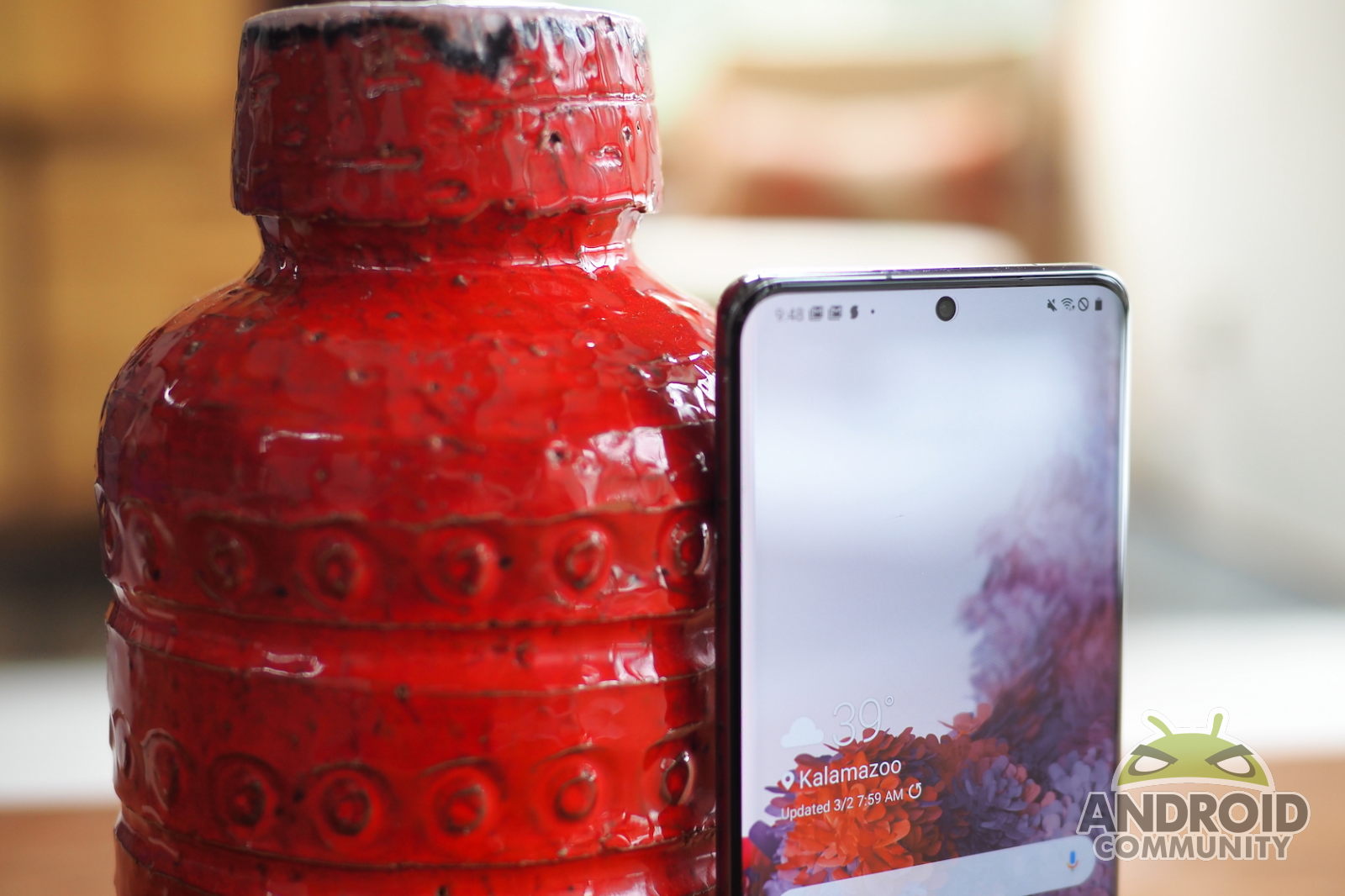
With its intention in the right place, the Galaxy S20 Ultra does its best to support you hen 5G is available. It supports low-band, mid-band, and high-band mmWave, which means it works with AT&T, Sprint, T-Mobile, and Verizon, however, the speeds vary. The low band 5G offered by T-Mobile is a step in the right direction and better than 4G LTE. It will be ideal if you could find Verizon’s mmWave, which offers the fastest connection.
Although 2020 was supposed to be the year of 5G but bridging the gap between services available and devices will take a longer time to build, given the current pandemic situation. Only time will unfold how the service providers and device makers will help support the 5G evolution.
Galaxy S20 Ultra 5G Wrap-up
The three biggest takeaways from our time with the Galaxy S20 Ultra has been its battery power, the beautifully constructed body, and the display. It’s safe to say that there is no dearth of features, but it took us quite some time to figure out how they work. A considerable amount of time.
Should you ditch the Hawaii trip and spend $1400 on this phone… err… just maybe. Unless you want to buy a laptop or new kitchen appliances. Truth be told, it’s not like smartphones don’t cost this much, it’s just the possibility of using this money for something more gainful in your life.
The pay-off doesn’t justify your investment, because you do see things like the Super Zoom going shaky on you after 30x. Even 5G support is not matched with the US coverage of 5G networks. According to Samsung, the bugs in the camera will be eased out, once the software update kicks in. However, we don’t know when that will happen.

In comparison, the Galaxy S20+ fits well in your hand, is equally fast and has the Single Take camera mode. It’s a 5G phone with a good display and knocks off $200 from the tab. Well, if you are ready to spend $1200, you may as well go all out and get the flagship 2020 piece. The software needs a desperate upgrade, otherwise, you are good to go.








